Abstract
OBJECTIVE: To measure the prevalence of prescription drug use in Saskatchewan in 1989. DESIGN: Retrospective study. PARTICIPANTS: A total of 961,203 Saskatchewan residents (including those who died or were born during the study year) who were eligible for coverage under the Saskatchewan Prescription Drug Plan. The study population represented 94% of the province's total population; those excluded were mostly status Indians (for whom a federal plan is available). MAIN RESULTS: At least one prescription was received by 66.0% of the study population in 1989. The mean number of prescriptions per patient was 8.2, and the mean cost of drug material per prescription was $13.95. Females received substantially more prescriptions than males; the difference was particularly notable for cardiovascular agents, antidepressants and benzodiazepines. In the senior population 80.8% received at least one prescription; the mean number of prescriptions per patient was 18.4. The most commonly dispensed drug for the entire study population was amoxicillin (290 prescriptions per 1000 people); triazolam was the most frequently dispensed central nervous system drug (74 prescriptions per 1000 people). Regional variation in overall drug use was remarkably small, although it increased at the drug-class level, especially for tranquillizers. The use of cardiovascular drugs was 27% to 32% higher (depending on how use was measured) per Regina resident than per Saskatoon resident. Benzodiazepines were commonly used on a long-term basis, despite recommendations to the contrary. CONCLUSIONS: The results quantify the prevalence of prescription drug use, underscore the importance of careful management of drug therapy by physicians and pharmacists (especially for seniors), illustrate substantial variation in drug therapy strategies and raise questions about utilization of benzodiazepines and cardiovascular drugs.
Full text
PDF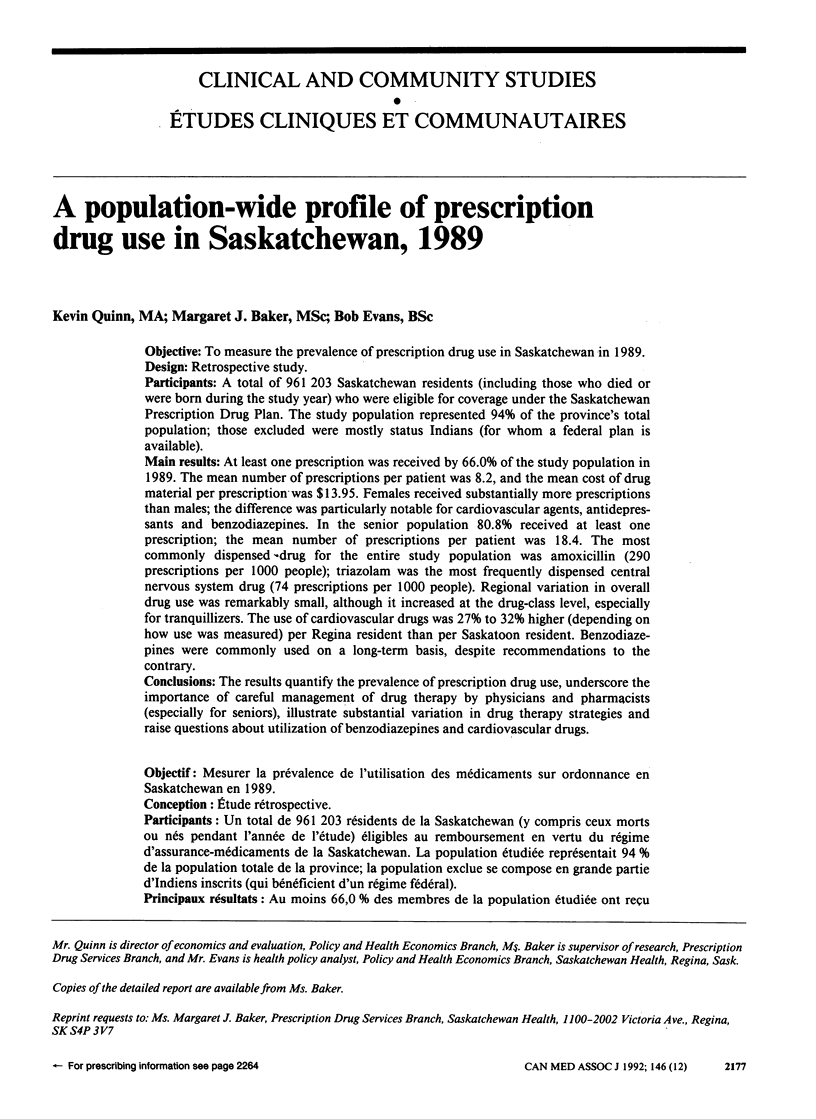
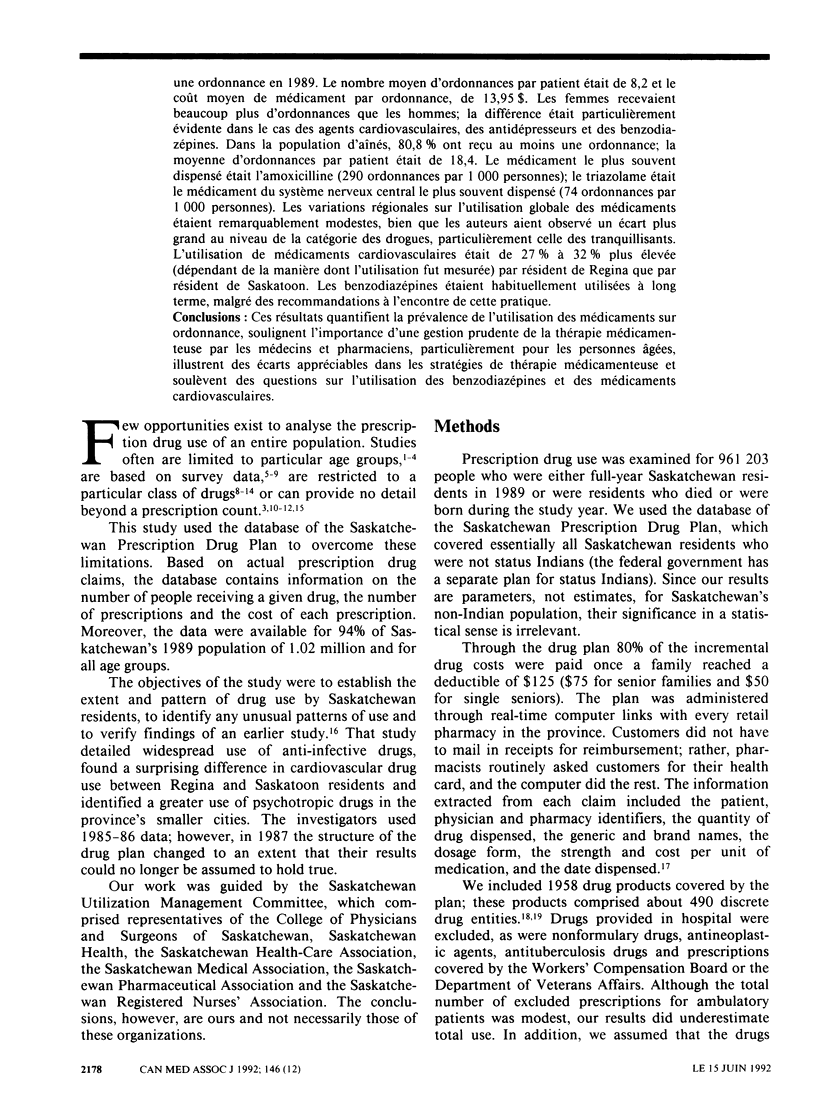
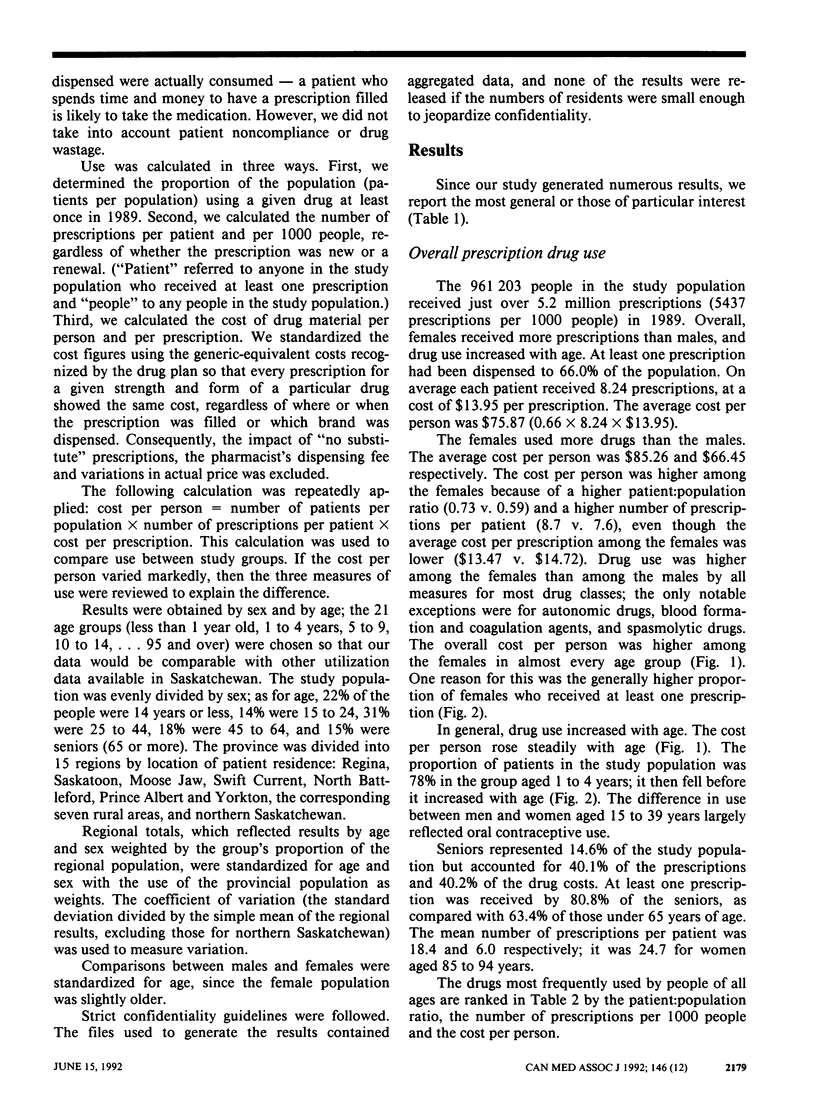
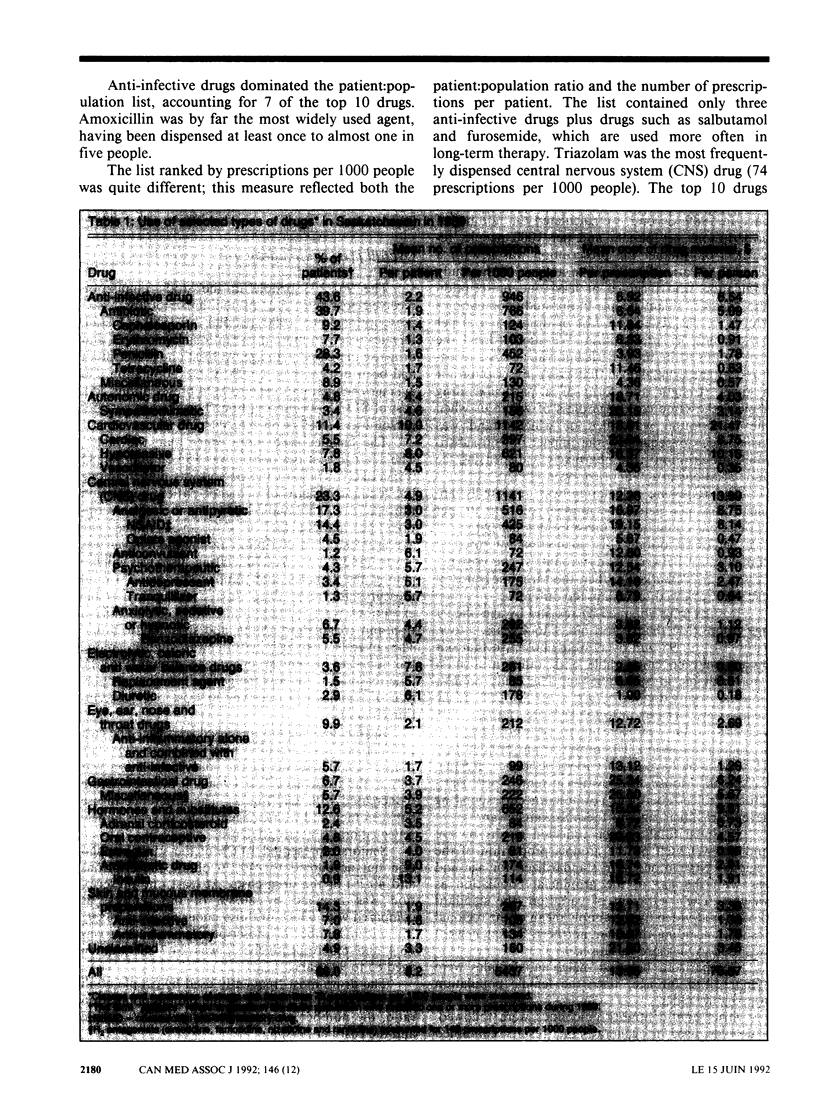
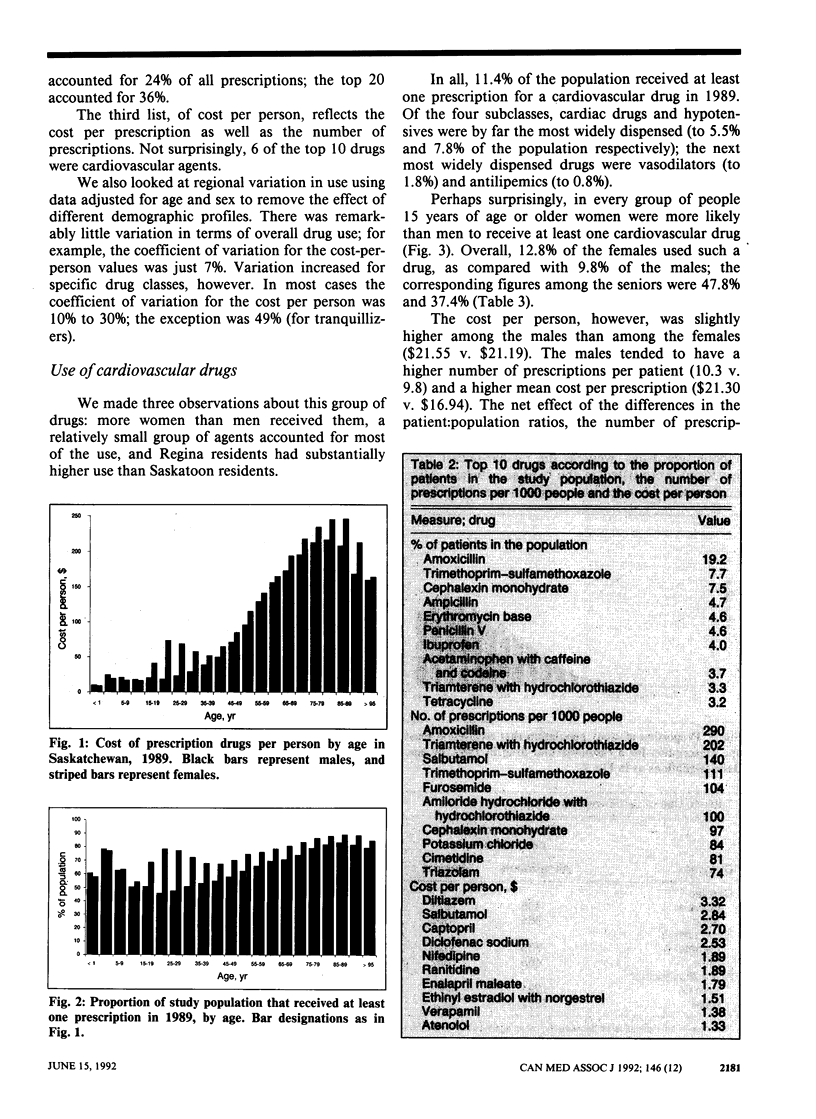
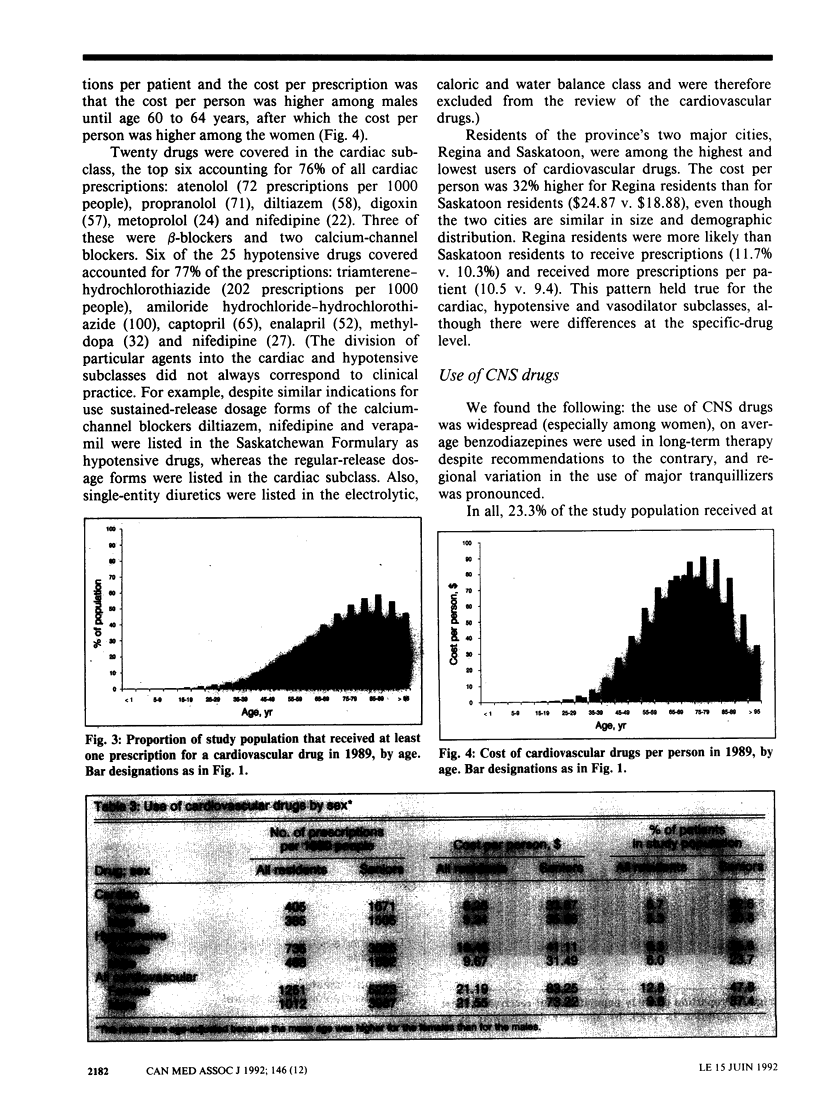
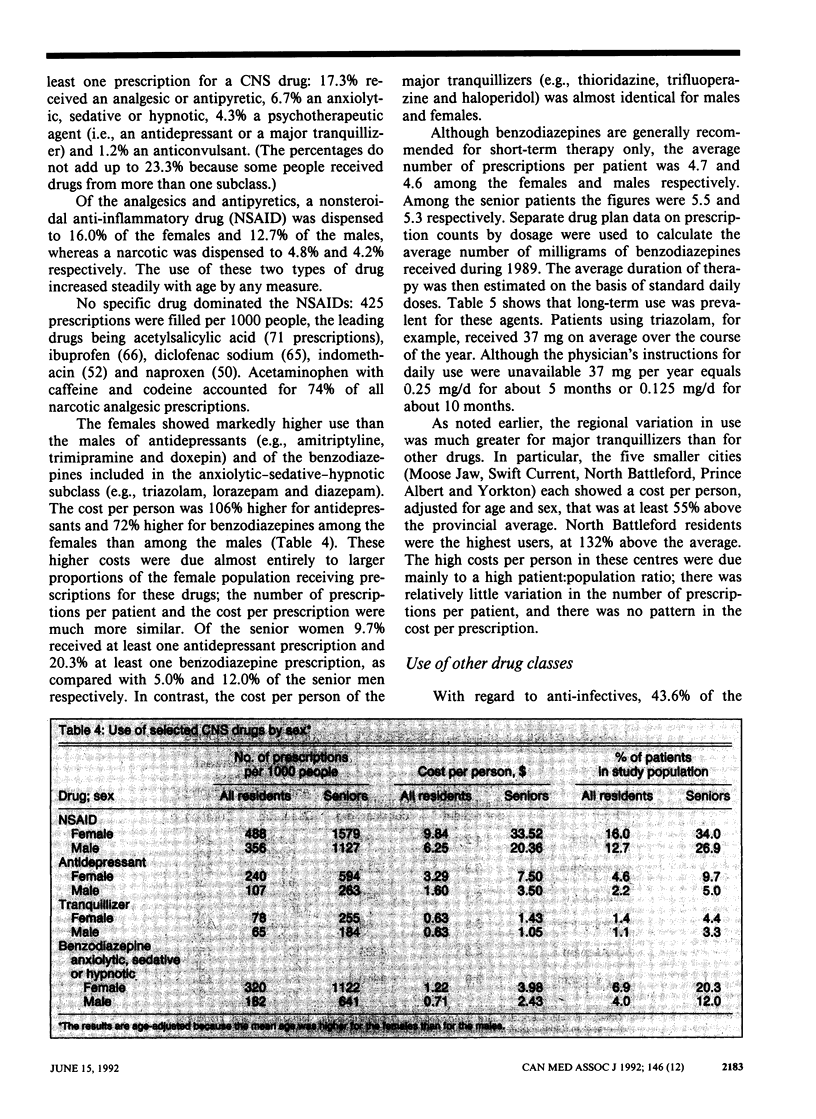
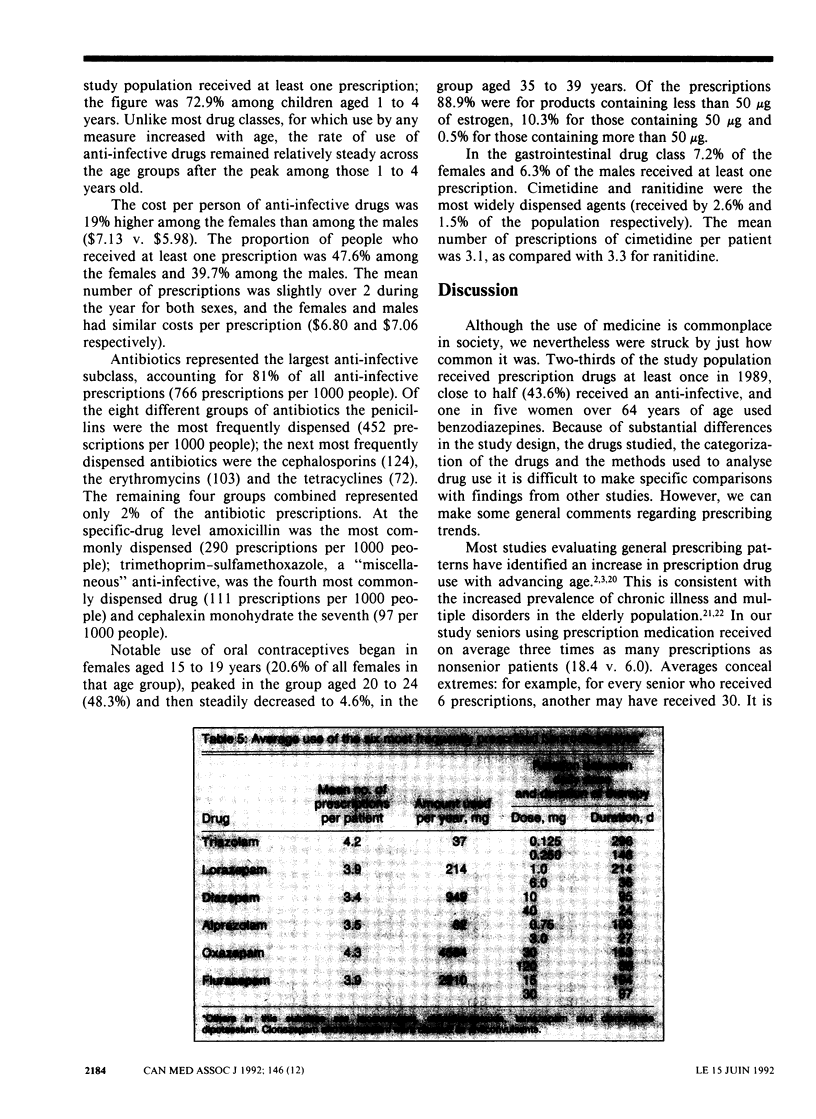
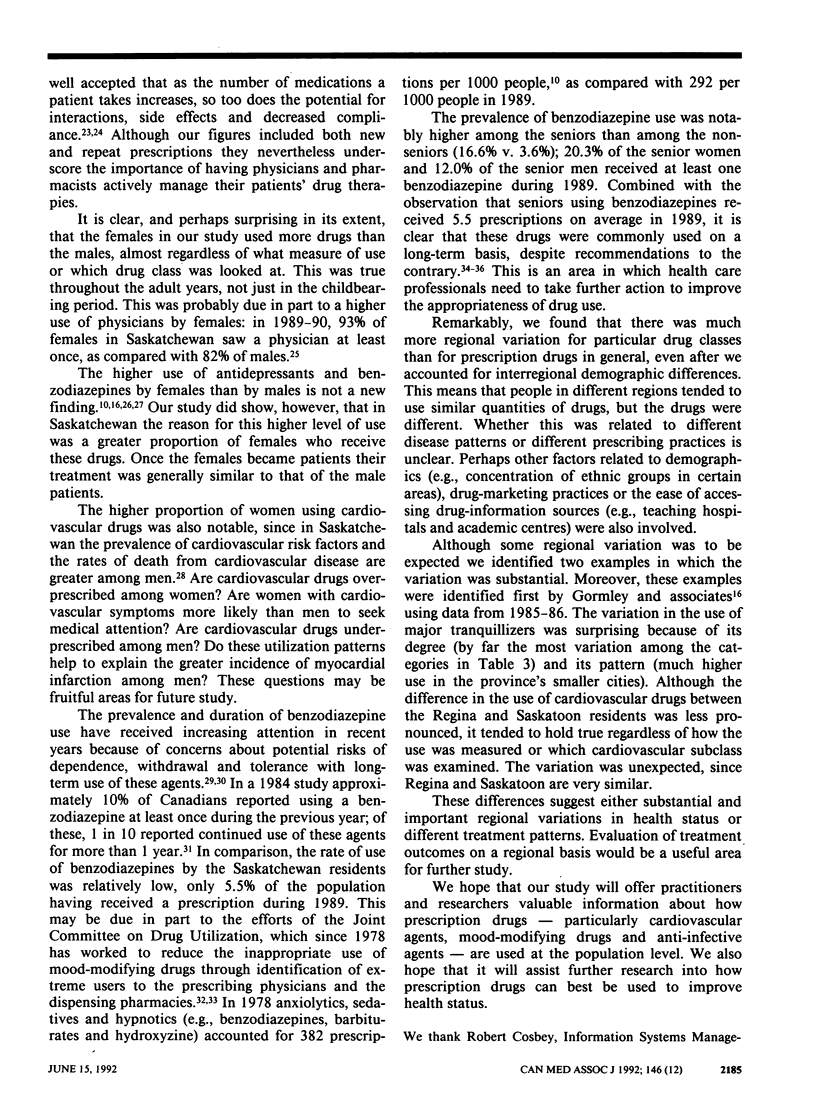
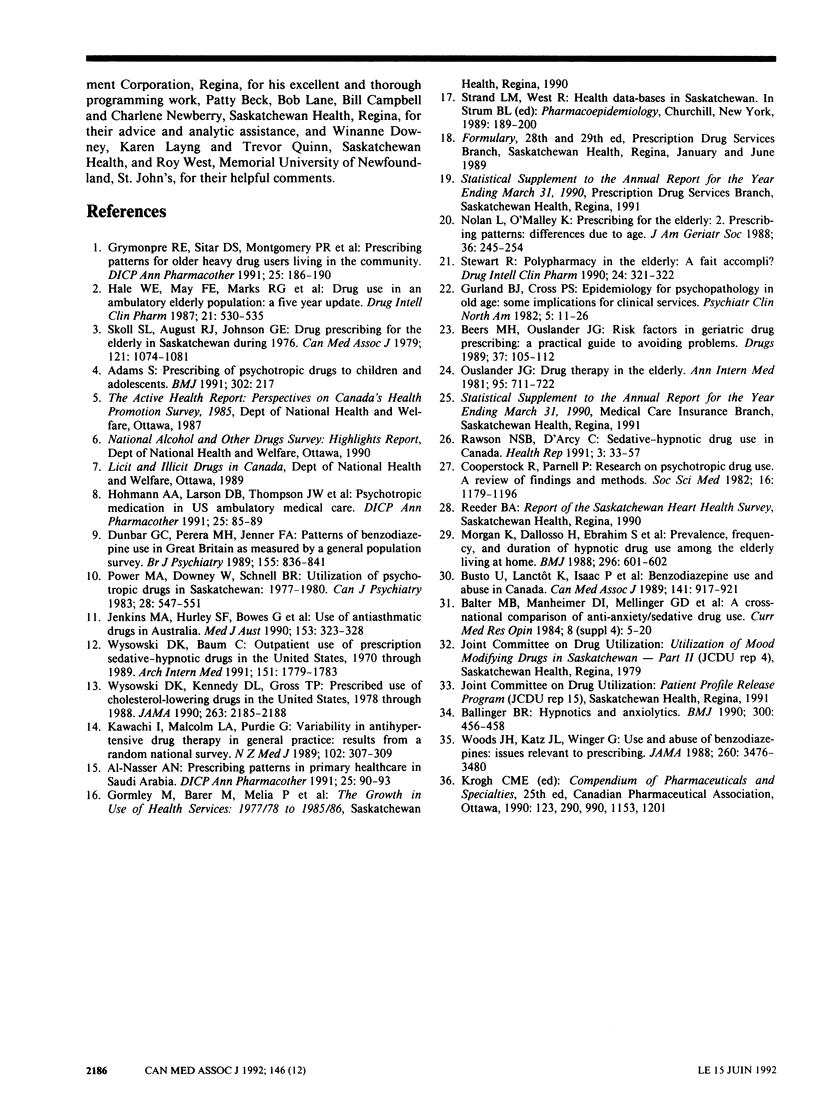
Selected References
These references are in PubMed. This may not be the complete list of references from this article.
- Adams S. Prescribing of psychotropic drugs to children and adolescents. BMJ. 1991 Jan 26;302(6770):217–217. doi: 10.1136/bmj.302.6770.217. [DOI] [PMC free article] [PubMed] [Google Scholar]
- Ballinger B. R. New drugs. Hypnotics and anxiolytics. BMJ. 1990 Feb 17;300(6722):456–458. doi: 10.1136/bmj.300.6722.456. [DOI] [PMC free article] [PubMed] [Google Scholar]
- Balter M. B., Manheimer D. I., Mellinger G. D., Uhlenhuth E. H. A cross-national comparison of anti-anxiety/sedative drug use. Curr Med Res Opin. 1984;8 (Suppl 4):5–20. doi: 10.1185/03007998409109541. [DOI] [PubMed] [Google Scholar]
- Beers M. H., Ouslander J. G. Risk factors in geriatric drug prescribing. A practical guide to avoiding problems. Drugs. 1989 Jan;37(1):105–112. doi: 10.2165/00003495-198937010-00008. [DOI] [PubMed] [Google Scholar]
- Busto U., Lanctôt K. L., Isaac P., Adrian M. Benzodiazepine use and abuse in Canada. CMAJ. 1989 Nov 1;141(9):917–921. [PMC free article] [PubMed] [Google Scholar]
- Cooperstock R., Parnell P. Research on psychotropic drug use. A review of findings and methods. Soc Sci Med. 1982;16(12):1179–1196. doi: 10.1016/0277-9536(82)90143-5. [DOI] [PubMed] [Google Scholar]
- Dunbar G. C., Perera M. H., Jenner F. A. Patterns of benzodiazepine use in Great Britain as measured by a general population survey. Br J Psychiatry. 1989 Dec;155:836–841. doi: 10.1192/bjp.155.6.836. [DOI] [PubMed] [Google Scholar]
- Grymonpre R. E., Sitar D. S., Montgomery P. R., Mitenko P. A., Aoki F. Y. Prescribing patterns for older heavy drug users living in the community. DICP. 1991 Feb;25(2):186–190. doi: 10.1177/106002809102500214. [DOI] [PubMed] [Google Scholar]
- Gurland B. J., Cross P. S. Epidemiology of Psychopathology in old age. Some implications for clinical services. Psychiatr Clin North Am. 1982 Apr;5(1):11–26. [PubMed] [Google Scholar]
- Hale W. E., May F. E., Marks R. G., Stewart R. B. Drug use in an ambulatory elderly population: a five-year update. Drug Intell Clin Pharm. 1987 Jun;21(6):530–535. doi: 10.1177/106002808702100610. [DOI] [PubMed] [Google Scholar]
- Hohmann A. A., Larson D. B., Thompson J. W., Beardsley R. S. Psychotropic medication prescription in U.S. ambulatory medical care. DICP. 1991 Jan;25(1):85–89. doi: 10.1177/106002809102500115. [DOI] [PubMed] [Google Scholar]
- Jenkins M. A., Hurley S. F., Bowes G., McNeil J. J. Use of antiasthmatic drugs in Australia. Med J Aust. 1990 Sep 17;153(6):323–328. doi: 10.5694/j.1326-5377.1990.tb136939.x. [DOI] [PubMed] [Google Scholar]
- Kawachi I., Malcolm L. A., Purdie G. Variability in antihypertensive drug therapy in general practice: results from a random national survey. N Z Med J. 1989 Jun 28;102(870):307–309. [PubMed] [Google Scholar]
- Morgan K., Dallosso H., Ebrahim S., Arie T., Fentem P. H. Prevalence, frequency, and duration of hypnotic drug use among the elderly living at home. Br Med J (Clin Res Ed) 1988 Feb 27;296(6622):601–602. doi: 10.1136/bmj.296.6622.601. [DOI] [PMC free article] [PubMed] [Google Scholar]
- Nolan L., O'Malley K. Prescribing for the elderly: Part II. Prescribing patterns: differences due to age. J Am Geriatr Soc. 1988 Mar;36(3):245–254. doi: 10.1111/j.1532-5415.1988.tb01809.x. [DOI] [PubMed] [Google Scholar]
- Ouslander J. G. Drug therapy in the elderly. Ann Intern Med. 1981 Dec;95(6):711–722. doi: 10.7326/0003-4819-95-6-711. [DOI] [PubMed] [Google Scholar]
- Power B., Downey W., Schnell B. R. Utilization of psychotropic drugs in Saskatchewan: 1977-1980. Can J Psychiatry. 1983 Nov;28(7):547–551. doi: 10.1177/070674378302800708. [DOI] [PubMed] [Google Scholar]
- Rawson N. S., D'Arcy C. Sedative-hypnotic drug use in Canada. Health Rep. 1991;3(1):33–57. [PubMed] [Google Scholar]
- Skoll S. L., August R. J., Johnson G. E. Drug prescribing for the elderly in Saskatchewan during 1976. Can Med Assoc J. 1979 Oct 20;121(8):1074–1081. [PMC free article] [PubMed] [Google Scholar]
- Stewart R. B. Polypharmacy in the elderly: a fait accompli? DICP. 1990 Mar;24(3):321–323. doi: 10.1177/106002809002400320. [DOI] [PubMed] [Google Scholar]
- Woods J. H., Katz J. L., Winger G. Use and abuse of benzodiazepines. Issues relevant to prescribing. JAMA. 1988 Dec 16;260(23):3476–3480. [PubMed] [Google Scholar]
- Wysowski D. K., Baum C. Outpatient use of prescription sedative-hypnotic drugs in the United States, 1970 through 1989. Arch Intern Med. 1991 Sep;151(9):1779–1783. [PubMed] [Google Scholar]
- Wysowski D. K., Kennedy D. L., Gross T. P. Prescribed use of cholesterol-lowering drugs in the United States, 1978 through 1988. JAMA. 1990 Apr 25;263(16):2185–2188. [PubMed] [Google Scholar]
- al-Nasser A. N. Prescribing patterns in primary healthcare in Saudi Arabia. DICP. 1991 Jan;25(1):90–93. doi: 10.1177/106002809102500116. [DOI] [PubMed] [Google Scholar]


